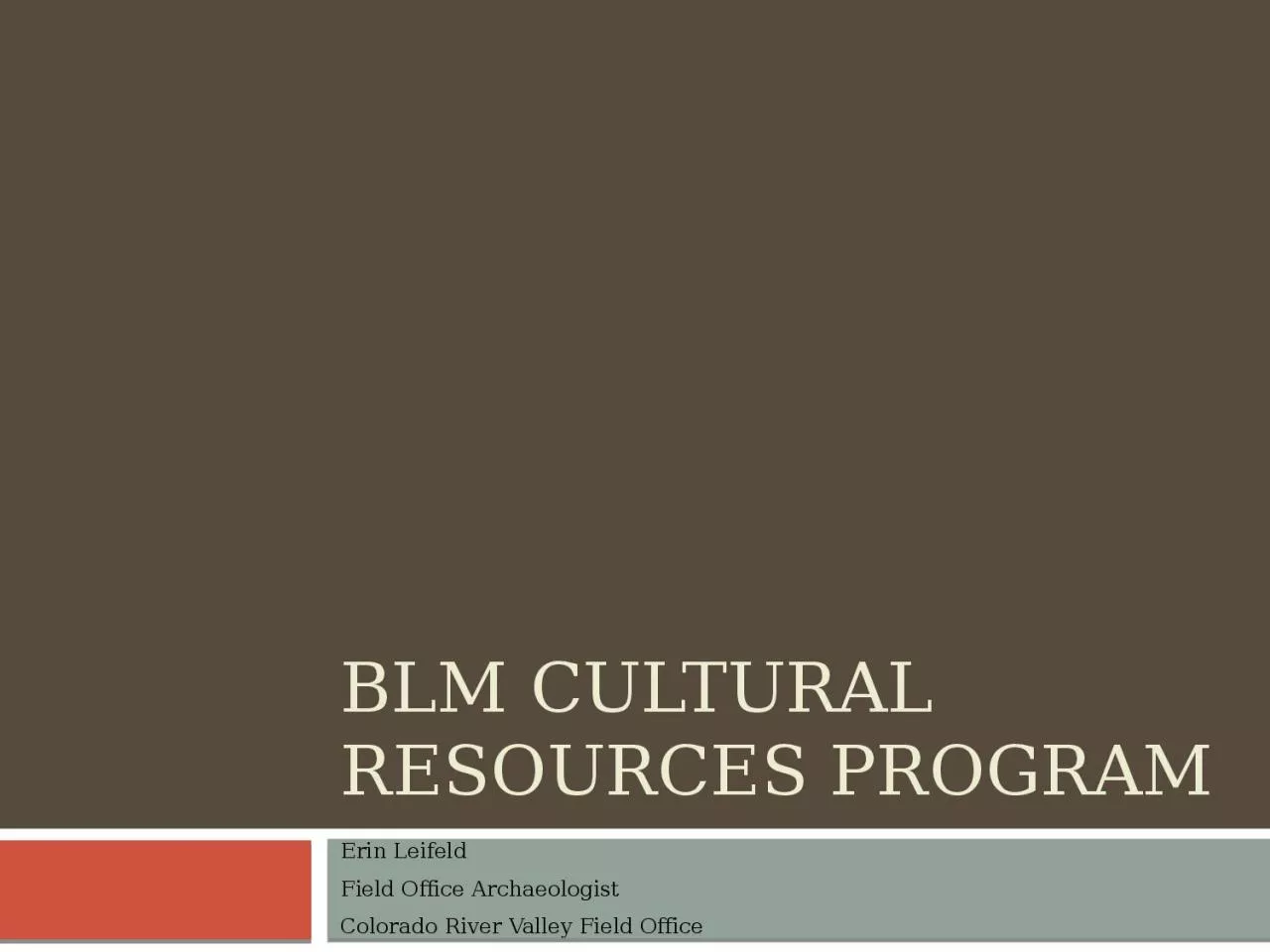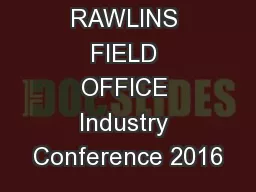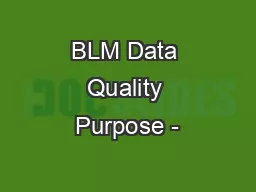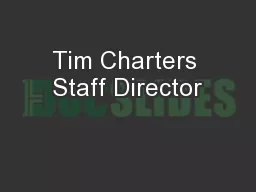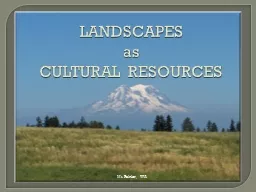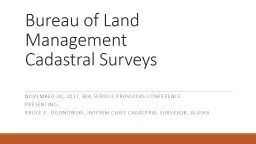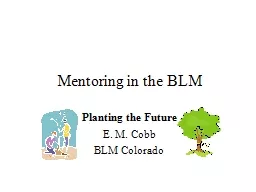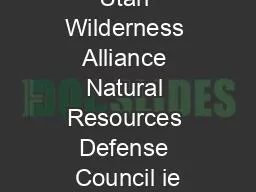PPT-BLM Cultural Resources Program
Author : lauren | Published Date : 2024-01-03
Erin Leifeld Field Office Archaeologist Colorado River Valley Field Office Cultural Resources Laws amp Regulations Antiquities Act 1906 National Historic Preservation
Presentation Embed Code
Download Presentation
Download Presentation The PPT/PDF document "BLM Cultural Resources Program" is the property of its rightful owner. Permission is granted to download and print the materials on this website for personal, non-commercial use only, and to display it on your personal computer provided you do not modify the materials and that you retain all copyright notices contained in the materials. By downloading content from our website, you accept the terms of this agreement.
BLM Cultural Resources Program: Transcript
Download Rules Of Document
"BLM Cultural Resources Program"The content belongs to its owner. You may download and print it for personal use, without modification, and keep all copyright notices. By downloading, you agree to these terms.
Related Documents

